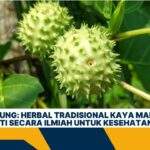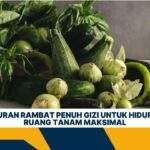Soil fertility plays a crucial role in the growth and development of plants. The ability of the soil to provide essential nutrients to plants determines their overall health and productivity. While synthetic fertilizers have been widely used to enhance soil fertility, there is a growing interest in organic alternatives that are environmentally friendly and sustainable. One such alternative is saprodap fertilizer, which offers numerous benefits for soil health and plant growth.
Understanding Organic Fertilizers
Organic fertilizers are derived from natural sources such as plant matter, animal waste, and compost. Unlike synthetic fertilizers, which contain chemicals, organic fertilizers provide a range of nutrients in a slow-release form, ensuring a steady supply of essential elements to plants. These fertilizers enrich the soil, improve its structure, and enhance microbial activity, promoting long-term soil health.
Introduction to Saprodap Fertilizer
Saprodap fertilizer is an organic fertilizer made from the fermentation of organic waste materials. It is a sustainable and eco-friendly alternative to synthetic fertilizers. Saprodap is produced by decomposing organic matter, such as agricultural waste, kitchen scraps, and animal manure, through a controlled fermentation process. This process enhances the nutrient content and availability of the fertilizer.
Benefits of Saprodap Fertilizer
Saprodap fertilizer offers several advantages over synthetic fertilizers. Firstly, it improves soil structure by increasing its water-holding capacity and promoting aeration. This leads to better root development and nutrient absorption by plants. Secondly, saprodap enhances nutrient availability in the soil, providing a balanced and comprehensive range of essential elements required for plant growth. Thirdly, it reduces the environmental impact associated with chemical fertilizers, as saprodap is derived from organic waste materials and does not contribute to pollution or soil degradation. Lastly, saprodap promotes microbial activity in the soil, facilitating nutrient cycling and creating a favorable environment for beneficial soil organisms.
How to Use Saprodap Fertilizer
Saprodap fertilizer can be applied using various methods, including broadcasting, banding, and foliar spraying. The dosage and frequency of application depend on the specific requirements of the plants and the nutrient content of the fertilizer. It is important to follow the recommended guidelines provided by the manufacturer or consult with agricultural experts for optimal results. Additionally, precautions such as avoiding direct contact with the skin and wearing protective gear should be taken when handling saprodap fertilizer.
Case Studies and Research
Numerous case studies and research projects have demonstrated the effectiveness of saprodap fertilizer in improving soil fertility and crop yield. Farmers who have adopted saprodap have reported significant improvements in plant growth, increased yields, and enhanced soil health. Scientific studies have also supported these findings, highlighting the positive impact of saprodap on soil structure, nutrient availability, and microbial diversity.
Cost-effectiveness of Saprodap Fertilizer
Compared to other organic and synthetic fertilizers, saprodap fertilizer offers a cost-effective solution for farmers. While the initial investment may be higher, the long-term benefits outweigh the costs. The improved soil fertility and reduced need for additional fertilizers contribute to savings in the long run. Moreover, saprodap supports sustainable farming practices by minimizing the reliance on chemical inputs and promoting natural nutrient cycling in the soil.
Sustainable Agriculture and Saprodap Fertilizer
Saprodap fertilizer plays a vital role in sustainable agriculture. By enriching the soil and promoting its health, saprodap helps reduce the dependency on synthetic fertilizers and minimizes the environmental impact of farming practices. It supports biodiversity by creating a favorable habitat for beneficial soil organisms, contributing to a balanced and resilient ecosystem. Incorporating saprodap into agricultural systems can help farmers transition to more sustainable and regenerative practices.
Challenges and Limitations
Despite its benefits, there are some challenges and limitations associated with the use of saprodap fertilizer. One challenge is the availability and accessibility of saprodap in certain regions. The production and distribution of saprodap may be limited, making it less accessible to farmers. Another limitation is the adaptability of saprodap to different soil types. While it is generally suitable for a wide range of soils, some specific soil conditions may require additional amendments or customized fertilization approaches. Finally, knowledge and awareness among farmers regarding saprodap and its benefits may be limited, hindering its widespread adoption.
Future Perspectives and Conclusion
The future of saprodap fertilizer looks promising. As awareness about sustainable agriculture grows and the demand for organic produce increases, the adoption of saprodap is likely to rise. Continued research and development in organic farming practices will further enhance the effectiveness and accessibility of saprodap. By prioritizing soil health and utilizing organic alternatives like saprodap, farmers can contribute to a more sustainable and resilient agricultural system.



